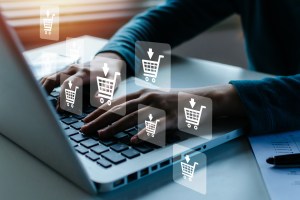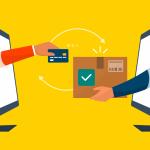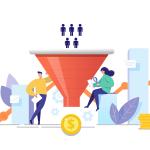Your sales conversion rate is a success story told in numbers. It tracks how many prospects convert into active buyers. And with 57% of businesses saying their competition has gotten trickier since last year in the Sixth Edition State of Sales Report, you can’t afford to ignore it.
Sales conversion rates are critical to understanding the performance of individual reps, and they also capture how well your business is driving revenue. The quicker you calculate sales conversion rate with precision, the more rapidly your business grows.
What is Sales Conversion Rate?
A sales conversion rate measures the percentage of leads and prospects that become paying customers. Reps might pitch or make offers to a slew of different people or businesses, but only some will sign a contract or make a purchase.
A higher sales conversion rate demonstrates that your customers have grasped the value proposition of your products and services and are ready to invest accordingly. It also means your company is in a better position to hit your topline target and can fund expansion into new markets and additional product lines and pursue other business opportunities.
Though sales conversion rate is just one key performance indicator (KPI) among many that companies use, it is valuable because you can apply it in different ways to assess performance. For example, you can measure it across a specific year or on a quarterly basis, or even tie it to a specific campaign.The results of your calculation should inform ongoing improvements in your sales strategy, from the quality of leads reps get to the processes they use and the technology that helps them achieve greater productivity and bottom-line results.
How to Calculate Conversion Rate in Sales
Anyone can do the math here. The following formula makes it easy to get the number you need:
Sales Conversion Rate = (Number of Sales/Number of Leads or Opportunities) x 100
Leads are people who have shown interest in your product or service. They may have clicked on an ad, downloaded a white paper, or even reached out directly to a sales rep. Often, marketing campaigns aim to capture leads that can be passed on to the sales team for follow up.
Sales reflect leads who have completed their buyer journey and made a purchase or become a paying customer.
The same formula can work across almost any kind of company or industry. For example, let’s say you run a Montreal-based software-as-a-service (SaaS) startup that has recently launched an artificial intelligence (AI) application that can help employees in other companies get more done each day.
Your marketing team runs a targeted campaign aimed at firms that fit its ideal customer profile (ICP). Through email outreach and digital ads, the marketing team attracts 1,000 leads. After connecting with each lead and nurturing their interest, the sales team converts 35 prospects into paying customers.
Using the above formula [(35/1000) x 100], your campaign has achieved a sales conversion rate of 3.5%.
Metrics That Impact Sales Conversion Rate
Getting more granular with your sales conversion rate provides greater visibility into what’s working and not across your sales and marketing process.
No matter what you’re selling, customers typically follow a standard path. It starts at the top of a sales funnel, where they learn about your company’s products and services. Then, based on how the sales team nurtures them, they either walk away or move further down the funnel as they ask more questions and learn more reasons to convert.
If you’re not already tracking them, these metrics can make or break your ability to turn leads into sales:
Marketing Qualified Lead (MQL)
When people research products and services, they seek the best content. You can offer that through eBooks, infographics, blog posts, and many other assets. When someone signs up to receive content by filling out a form, visiting a landing page, or opting into an email newsletter, they signal interest in your products or services.
Your marketing team captures this interest by designating the prospect as a marketing qualified lead (MQL) based on how much or how often the lead has engaged with your brand’s content.
Sales Qualified Lead (SQL)
As sales reps review your MQLs, they may notice some work in an industry your company doesn’t serve or at a company that’s too small or too large for your products and services.
Some MQLs include information noting the lead has indicated they’d like to talk to a rep and see a product demo.
If the person’s information fits the ideal customer profile (ICP) and suggests an active intent to buy, they turn into a sales qualified lead (SQL). Reps then have a solid prospect they may be able to convert.
MQL-to-SQL Conversion Rate
A marketing campaign could generate a high volume of MQLs because the content is enticing. Still, if only a tiny fraction are qualified as ICPs, you’re wasting valuable budget and other resources. Smart companies keep a close eye on the percentage of MQLs that become SQLs so they get more bang for every buck they spend on marketing.
If the MQL to SQL conversion rate is too low, you could rework your campaign content to target your message to a specific industry, niche or business size, whether small and medium-sized businesses or enterprises.
SQL-to-Sale Conversion Rate
Reps sometimes refer to this rate as their win rate because it reflects how often they’ve managed to get a prospect to say yes to an offer or pitch.
A low SQL-to-sale conversion rate can mean your reps lack the information they need to overcome common objections. It could also suggest you need to price your product more competitively, or your target ICP has qualities you don’t fully understand that need to be taken into account.
In some industry sectors the buying cycle can be long, especially in large companies that need to go through several layers of approval or do extra due diligence steps before signing a deal.
What is a Good Conversion Rate for Sales?
Even once you’ve done your calculations, you or your leadership team may wonder: What is the average sales conversion rate? This question can be answered across multiple dimensions, but in terms of digital purchases, the average eCommerce sales conversion rate in Canada was 2.9% in 2023, according to ECDB.
You may be able to find similar benchmarks through market research firms, industry associations, and other trusted sources. If your number seems out of sync with similar companies, ask yourself and your team:
What external forces might be influencing your conversion rate? Macroeconomic headwinds, such as periods of high inflation, can lead some potential customers to pull back on making purchases. The number of viable competitors and even the weather can have an impact on customer spending.
How does the nature of your product or service influence conversions? A high-ticket product or a service that requires a costly monthly or annual subscription fee could require more time to close deals. In this case, you may want to change whether you tie your sales conversion rate to a campaign or time period.
What kind of decision-making process is involved? In many business-to-business (B2B) organizations, a rep might be talking to a lead who is part of a buying committee of half a dozen or more stakeholders. This setup can affect conversions because discussions behind the scenes can prolong the process.
What channels are you prioritizing? Closing deals with leads in person can look very different than e-commerce sales. Try to map the complete customer journey, noting where leads might be at risk of dropping off. Assess which kind of content could move them faster through the funnel.
Wherever your conversation rate for sales stands today, you always have opportunities to take it higher if you develop the right strategy.
How to Increase Conversion Rate in Sales
Turning more opportunities into closed/won deals is no longer limited to manual human effort alone. More than eight in 10 (83%) sales teams using AI saw revenue growth in the past year compared to 66% of teams without AI, according to the Sixth Edition State of Sales Report.
Taking advantage of an AI-powered CRM can be the first step in optimizing sales rate conversion because it gathers all the relevant customer data to provide a single source of truth. That means it contains insights into everything from the quality of MQLs and SQLs to gaps in sales processes that affect deal closing.
From there, you can use generative AI to help you produce more compelling marketing content to attract leads and sales enablement content to nurture leads and move deals forward. AI doesn’t replace trained strategists, writers, and editors but can streamline the brainstorming, outlining, and editing stages of content creation. Draw upon CRM data to help you personalize every engagement to sound more relevant and credible.
Agentic AI goes beyond surfacing insights and performs autonomous tasks. For example, it may follow up with leads, schedule meetings, or adjust campaigns without human oversight. It represents the most transformative opportunity to optimize your sales conversion rate.You can also use pre-built agents to surround reps with a limitless sales force that can follow up with leads on a 24/7 basis and accelerate key processes. Agents can answer initial questions from prospects, book meetings on a rep’s behalf, and create tailored quotes. AI is also continuously learning, which means it can help reps prioritize leads and forecast win rates.
Unlock Higher Sales Conversion Rates
Review your sales conversion rate on a regular basis to see how reps are performing and how your overall process, tools, and strategy support their work.
Turning prospects into paying customers can involve a lot of trial and error, and traditionally, it required painstaking effort and a lot of hours from sales teams. AI can automate a lot of those tasks and work alongside reps to make sure they win as many opportunities as possible.
AI tools are easy to learn and use, and they allow sales teams to achieve more than they could ever accomplish on their own. Most importantly, equipping sales teams with AI means you’ll close more deals with the right customers, which is the surest path to growth.

























